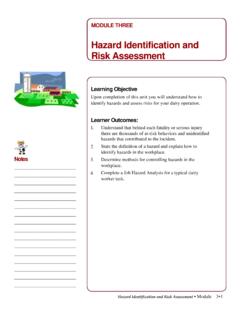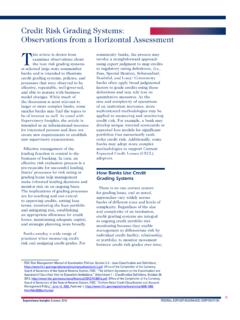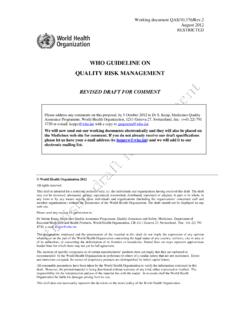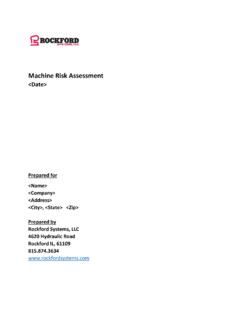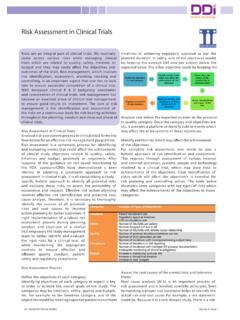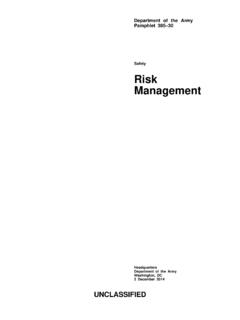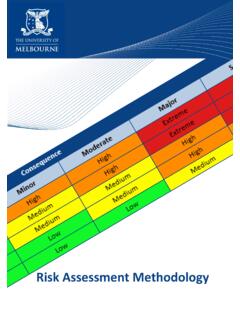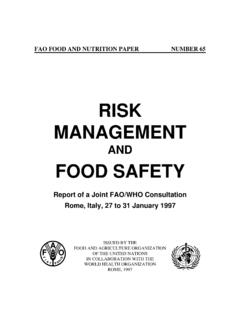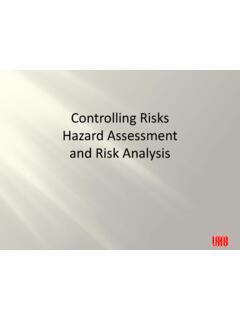Transcription of Introduction to Safety Risk Management
1 FAA Aviation Safety Produced by FAA Safety Briefing | Download at General Aviation Joint Steering Committee Safety Enhancement Topic Introduction to Safety Risk Management Civil aviation organizations, air carriers, and military aviation activities have embraced Safety Risk Management a foundational component of all Safety Management systems. Single-pilot operations can also enjoy the benefits of safer, more efficient flying through the application of risk Management processes. Risk Management is a formalized way of dealing with hazards. It is a logical process of evaluation where you weigh the potential costs of a risk against the potential benefits you might receive, if you allowed that risk to stand uncontrolled. In order to better understand risk Management , the terms hazard and risk need to be understood. A hazard is a present condition, event, object, orcircumstance that could lead to or contribute to an unplanned or undesired event such as an accident.
2 It is asource of danger. Examples of common aviation hazards include a nick in the propeller blade, improper refueling of an aircraft, pilot fatigue, and the use of unapproved hardware on the aircraft. If pilots do not recognize a hazard and choose tocontinue, the involved risk is not managed. Risk Management is a three-step process that people use to: identify hazards, express how likely those hazards are to negatively impact their operations, and reduce the chances that those hazards will cause an accident. Step 1: Hazard Identification What conditions or circumstances could negatively affect your flight? Step 2: Risk Assessment How likely are the identified hazards to cause a problem and how severe will the consequences be if they do? Step 3: Risk Mitigation What can you do to reduce the risks to acceptable levels? We need to constantly monitor the hazards and risks associated with our flight to make sure that the identified risks remain at an acceptable level.
3 AFS-850 19-01 Continued on Next Page Flight Risk Assessment Tools (FRAT) Because every flight has some level of risk, it is critical that pilots are able to differentiate, in advance, between a low-risk flight and a high-risk flight, and then establish a review process and develop risk mitigation strategies. A FRAT enables proactive hazard identification, it is easy to use, and can visually depict risk. It is an invaluable tool in helping pilots make better go/no-go decisions and should be a part of every flight. Although designs can vary, FRATs generally ask a series of questions that help identify and quantify risk for a flight. The FAA Safety Team (FAASTeam) currently offers a FRAT tool that follows the PAVE checklist, covering questions on the Pilot, Aircraft, enViroment, and External Pressures. For example, you may be asked how much rest you ve had, how much time you ve had in the aircraft, and what the weather conditions are for your destination. Based on the answers you supply, a total risk score is calculated.
4 No FRAT can anticipate all the hazards that may impact a particular flight, but there are some common hazards that GA pilots encounter regularly. The FAASTeam s easy-to-use and GA-focused FRAT can get you started in effective Safety risk Management . The FRAT tool is currently available as an automated spreadsheet available at or via an iOS app available on the App Store at Produced by FAA Safety Briefing | Download at Resources Risk Management Safety Minute Video Risk Management Training Video FAA Risk Management Handbook Flight Risk Assessment Tools (FRAT) Fact Sheet January/February 2017 issue of FAA Safety Briefing Risky Business: The What, How, and Why of Risk Management Say Ahh .. A Pilot s Guide to Self-Assessing Risk Is My Aircraft Right for Flight? The Importance of Preflight Prep The Wild (Not So Blue) Yonder: Mitigating Risk in the Flight Operating Environment Are We There Yet? How External Pressures Can Affect Your Flight











